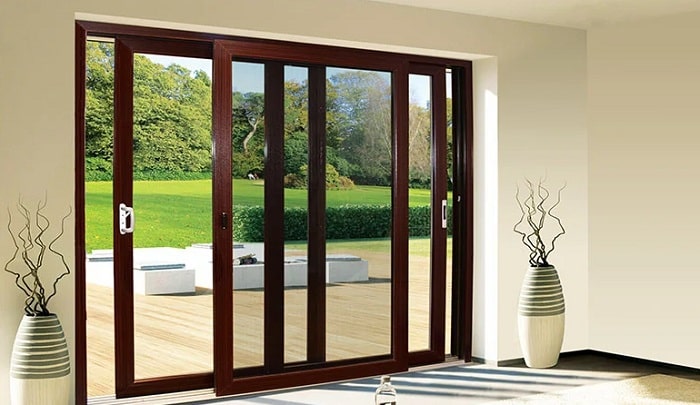Have you ever peered through a beautifully designed custom window and pondered the complexities hidden behind its serene view? While the allure of tailor-made windows and Screen Doors Los Angeles – Peninsula Mobile Screens is undeniable, the journey to perfect installations and maintenance is fraught with technical challenges.
This comprehensive guide delves deep into the realms of installation complexities, maintenance intricacies, energy efficiency upgrades, and the often-overlooked regulatory standards that could make or break the success of your home renovation projects.
The Art and Science of Custom Window Installation

Understanding the Landscape
Custom window installation is not just about fitting a glass pane into a wall. It’s a meticulous process that intertwines aesthetic vision with precision engineering. Why do many homeowners opt for custom solutions? Simply put, off-the-shelf windows often fall short in matching the unique architectural nuances of a home.
Technical Challenges Unveiled
Imagine this scenario: An old Victorian house, with its charming but uneven old walls, is about to get a facelift with custom arched windows. The challenge here isn’t merely aesthetic but structural. Ensuring the integrity of the installation involves detailed measurements, bespoke materials, and often, a little ingenuity.
Misfit Miseries
A common issue arises when windows do not fit the apertures exactly, leading to gaps that must be filled, affecting both the look and insulation properties. Have you ever seen a window sitting awkwardly in its frame? It’s like watching a cat trying to fit into a box that’s too small – amusing yet somewhat pitiful.
Solutions and Strategies
To counter these fitting foibles, skilled installers use laser measurement tools and computer-aided design (CAD) software to achieve precision. Moreover, selecting the right materials that can adapt to the specific environmental conditions plays a crucial role.
The Complex World of Door Installation
Beyond the Hinges
When it comes to doors, the installation process might look straightforward – until you encounter a scenario where nothing aligns. Consider a bespoke oak door designed for a rustic home. The wood’s natural tendency to expand and contract with temperature changes can turn the dream of a perfect fit into a sticky or gaping nightmare.
Real-Life Comedy of Errors
Here’s a light-hearted anecdote: a homeowner orders a custom sliding door. When installed, it slides beautifully – only it won’t stop sliding back and forth on its own on slightly windy days. It turns out, the house wasn’t perfectly level. It’s like living in a funhouse, where even the doors are in on the joke!
Overcoming the Obstacles
Advanced installation techniques, such as using adjustable thresholds and precision frames, can alleviate such problems. Moreover, continuous training for installers ensures they are up to date with the latest solutions and techniques.
Maintenance and Repair: Keeping the Charm Alive
Routine Upkeep
The maintenance of windows and doors is pivotal for their longevity and performance. Issues like wood rot, rusting hinges, or sealant failures can turn costly if ignored.
Common Repairs
Consider the example of a seaside home, where salt spray has led to the premature aging of window frames. Regular maintenance such as resealing the windows annually can protect against such elements and save considerable replacement costs down the line.
Pushing the Envelope on Energy Efficiency
Green Upgrades
In the quest for sustainability, upgrading to energy-efficient windows and doors is becoming more of a necessity than a choice. But, upgrading isn’t just about slapping on some double-glazed units and calling it a day. It requires a thorough understanding of materials, glass technology, and installation techniques.
The Payoff
Imagine reducing your energy bill by up to 30% just by upgrading your windows. It’s not only a win for your wallet but also for the planet. Engaging with knowledgeable professionals who can provide guidance tailored to your specific needs can ensure that these upgrades provide maximum benefits.
Navigating Regulatory and Compliance Standards
The Rulebook
Every region has its own set of building codes and standards that must be adhered to when installing windows and doors. These regulations are not just bureaucratic red tape but are designed to ensure safety, durability, and energy efficiency.
Anecdote of Absurdity
A contractor once joked that he spends more time reading building codes than bedtime stories. It’s funny because it’s true. Yet, understanding these complex regulations is crucial to ensure that all installations are up to standard and legally compliant.
Expert Insights
Engaging with experts who specialize in building codes can demystify the compliance process and ensure that all technical requirements are seamlessly integrated into the design and installation processes.
Peninsula Mobile Screens – Custom Window and Door Installation and Repair
Address : 4235 Sawtelle Blvd, Los Angeles, CA 90066
Call: +1 (3108)-365-746
Social
Flickr
Tumblr
Yelp
Bbb
Los Angeles
Los Angeles,[a] often referred to by its initials L.A., is the most populous city in the U.S. state of California. With roughly 3.9 million residents within the city limits as of 2020,[7] Los Angeles is the second-most populous city in the United States, behind only New York City; it is also the commercial, financial and cultural center of Southern California. Los Angeles has an ethnically and culturally diverse population, and is the principal city of a metropolitan area of 13.2 million people. Greater Los Angeles, which includes the Los Angeles and Riverside–San Bernardino metropolitan areas, is a sprawling metropolis of over 18 million residents.
The majority of the city proper lies in a basin in Southern California adjacent to the Pacific Ocean in the west and extending partly through the Santa Monica Mountains and north into the San Fernando Valley, with the city bordering the San Gabriel Valley to its east. It covers about 469 square miles (1,210 km2),[6] and is the county seat of Los Angeles County, which is the most populous county in the United States with an estimated 9.86 million residents as of 2022.[16] It is the fourth-most visited city in the U.S. with over 2.7 million visitors as of 2022.[17]
The area that became Los Angeles was originally inhabited by the indigenous Tongva people and later claimed by Juan Rodríguez Cabrillo for Spain in 1542. The city was founded on September 4, 1781, under Spanish governor Felipe de Neve, on the village of Yaanga.[18] It became a part of Mexico in 1821 following the Mexican War of Independence. In 1848, at the end of the Mexican–American War, Los Angeles and the rest of California were purchased as part of the Treaty of Guadalupe Hidalgo and became part of the United States. Los Angeles was incorporated as a municipality on April 4, 1850, five months before California achieved statehood. The discovery of oil in the 1890s brought rapid growth to the city.[19] The city was further expanded with the completion of the Los Angeles Aqueduct in 1913, which delivers water from Eastern California.
Los Angeles has a diverse economy with a broad range of industries. Los Angeles is best known as the home of the Hollywood film industry, the world’s largest by revenue; the city was an important site in the history of film. It also has one of the busiest container ports in the Americas.[20][21][22] In 2018, the Los Angeles metropolitan area had a gross metropolitan product of over $1.0 trillion,[23] making it the city with the third-largest GDP in the world, after New York and Tokyo. Los Angeles hosted the Summer Olympics in 1932 and 1984, and will also host in 2028. Despite a business exodus from Downtown Los Angeles since the COVID-19 pandemic, the city’s urban core is evolving as a cultural center with the world’s largest showcase of architecture designed by Frank Gehry.[24] More recently, statewide droughts in California have strained both the city’s and Los Angeles County’s water security.[25][26]
Toponymy
On September 4, 1781, a group of 44 settlers known as “Los Pobladores” founded the pueblo (town) they called El Pueblo de Nuestra Señora la Reina de los Ángeles, ‘The Town of Our Lady the Queen of the Angels’.[27] The original name of the settlement is disputed; the Guinness Book of World Records rendered it as “El Pueblo de Nuestra Señora la Reina de los Ángeles de Porciúncula“;[28] other sources have shortened or alternate versions of the longer name.[29]
The local English pronunciation of the name of the city has varied over time. A 1953 article in the journal of the American Name Society asserts that the pronunciation /lɔːs ˈændʒələs/ lawss AN-jəl-əs was established following the 1850 incorporation of the city and that since the 1880s the pronunciation /loʊs ˈæŋɡələs/ lohss ANG-gəl-əs emerged from a trend in California to give places Spanish, or Spanish-sounding, names and pronunciations.[30] In 1908, librarian Charles Fletcher Lummis, who argued for the name’s pronunciation with a hard g (/ɡ/),[31][32] reported that there were at least 12 pronunciation variants.[33] In the early 1900s, the Los Angeles Times advocated for pronouncing it Loce AHNG-hayl-ais (/loʊs ˈɑːŋheɪleɪs/), approximating Spanish [los ˈaŋxeles], by printing the respelling under its masthead for several years.[34] This did not find favor.[35]
Since the 1930s, /lɔːs ˈændʒələs/ has been most common.[36] In 1934, the United States Board on Geographic Names decreed that this pronunciation be used by the federal government.[34] This was also endorsed in 1952 by a “jury” appointed by Mayor Fletcher Bowron to devise an official pronunciation.[30][34]
Common pronunciations in the United Kingdom include /lɒs ˈændʒɪliːz, –lɪz, –lɪs/ loss AN-jil-eez, -iz, -iss.[37] Phonetician Jack Windsor Lewis described the most common one, /lɒs ˈændʒɪliːz/ ⓘ, as a spelling pronunciation based on analogy to Greek words ending in -es, “reflecting a time when the classics were familiar if Spanish was not”.[38]
Conclusion
Stepping into the world of custom windows and doors opens up a panorama of possibilities. Whether it’s overcoming installation complexities, maintaining the enduring charm of your home, boosting energy efficiency, or navigating the intricate tapestry of
